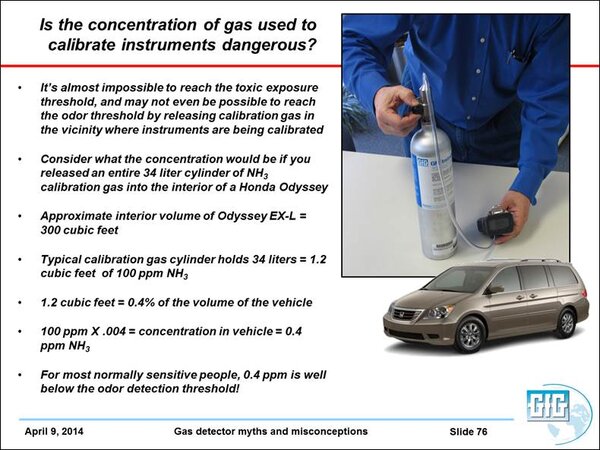Question:
Why is the ammonia in the calibration cylinder odorless? And is the concentration of gas used to calibrate gas dangerous?
Answer:
Some people can smell ammonia down to 0.04 ppm. However, according to OSHA the odor threshold for most people is between 5 and 50 ppm. We normally use 100 ppm NH3 to calibrate Micro IV and G460 ammonia sensors. One hundred ppm is above the odor threshold for most people, so you would think you could smell the gas. But there are other factors to consider.
Ammonia has a desensitizing effect on the sense of smell for people who work around it for prolonged periods of time. There is a noticeable odor of ammonia throughout the facility where the NH3 Micro IV detectors are being used. Because of this on-going exposure, many people in the facility may be partly, and some may be almost completely desensitized to the odor of the gas. For these people it can take a concentration higher than 100 ppm for the odor to be detectable.
However, a more important factor is the dilution effect when the ammonia is released into the air.
A cylinder of 100 ppm ammonia calibration gas doesn’t contain very much ammonia. Remember that it takes 10,000 ppm to equal 1%. Thus 100 ppm = 0.01% by volume. When you release this already low concentration into the air it is rapidly diluted to a level well below the odor threshold.
One of the instructional GfG webinars we offered last year, “Gas detection myths and misconceptions”, included the following slide. You can see in my example that even when you release the NH3 calibration gas in a small enclosed space like the interior of a passenger vehicle, because of the dilution effect, the concentration is below the odor threshold.
Thank you for asking this question.

